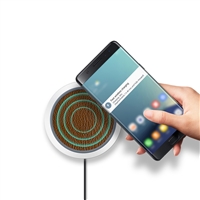
They come in all shapes in sizes, with price tags to match. You may want something lightweight and inexpensive, but that's no good if it won't charge your most essential devices....
Happiness is a fully charged battery. Of course, if you travel regularly, you know just how quickly your phone, tablet, mobile hotspot, and other gear can run out of juice.
That's why I consider it essential to pack a portable charger, which lets you extend your runtimes without having to seek out an AC outlet (or put extra strain on your laptop by siphoning power from its USB ports).
Ah, but what kind of portable charger should you choose? They come in all shapes in sizes, with price tags to match. You may want something lightweight and inexpensive, but that's no good if it won't charge your most essential devices. So how can you pick the ideal juice-box for your carry-on?
It's all about math. A rechargeable battery's capacity is usually measured in milliamperes (mAh). For example, a Samsung Galaxy S3 comes with a 2,100mAh battery, while the iPhone 5 relies on a 1,440mAh cell.
It stands to reason, then, that any portable charger you buy should have at least as much capacity as your smartphone. That way you can fully recharge it from a fully drained state.
Now, let's say you're also packing a Kindle Fire HD. And a Bluetooth speaker. The former boasts a beefy 4,400mAh battery, while the latter might use a 1,500mAh cell.
Assuming you'd want to be able to recharge all three devices, you'd need a charger with an 8,000mAh battery.
If you're not sure what size battery your phone, tablet, or other gadget uses, you may be able to find out on the manufacturer's Web site in the tech-specs section.
Welcome your OEM & ODM order now in special customized mobile phone charger from Mier
You can also try what I tried, which is Googling the product name and "battery mAh." So, for example, to learn the capacity of the iPhone 5's battery, I searched for "iPhone 5 battery mAh." Just from previewing the results, I was able to determine the number.
Needless to say, the larger the battery in a mobile charger, the more you'll be able to juice your mobile devices. But larger batteries weigh more and cost more, so you'll have to factor those considerations into your decision.
I should also note that tablets can really throw the equation out of whack, as they tend to have very large batteries. If you thought the Kindle Fire HD's was big, the iPad 3 uses a whopping 11,666mAh cell. Good luck finding a mobile charger that can give that a full charge. (Here are 10 chargers built for tablets.)
Recently I took a trip with the My Charge Peak 6000, and found it an almost ideal travel companion. Stocked with a 6,000mAh battery and both microUSB and Apple 30-pin plugs, it was able to fully recharge my iPhone 4S and Galaxy S3, with enough juice left over to at least top off my iPad. It fits my definition of "just right" for the road: not too large, not too small.
Of course, it's just one option out of hundreds. But before you spend money on a mobile charger, I urge you to crunch the battery numbers and make sure you buy one that can accommodate your existing mobile gear.?
Customer Service
